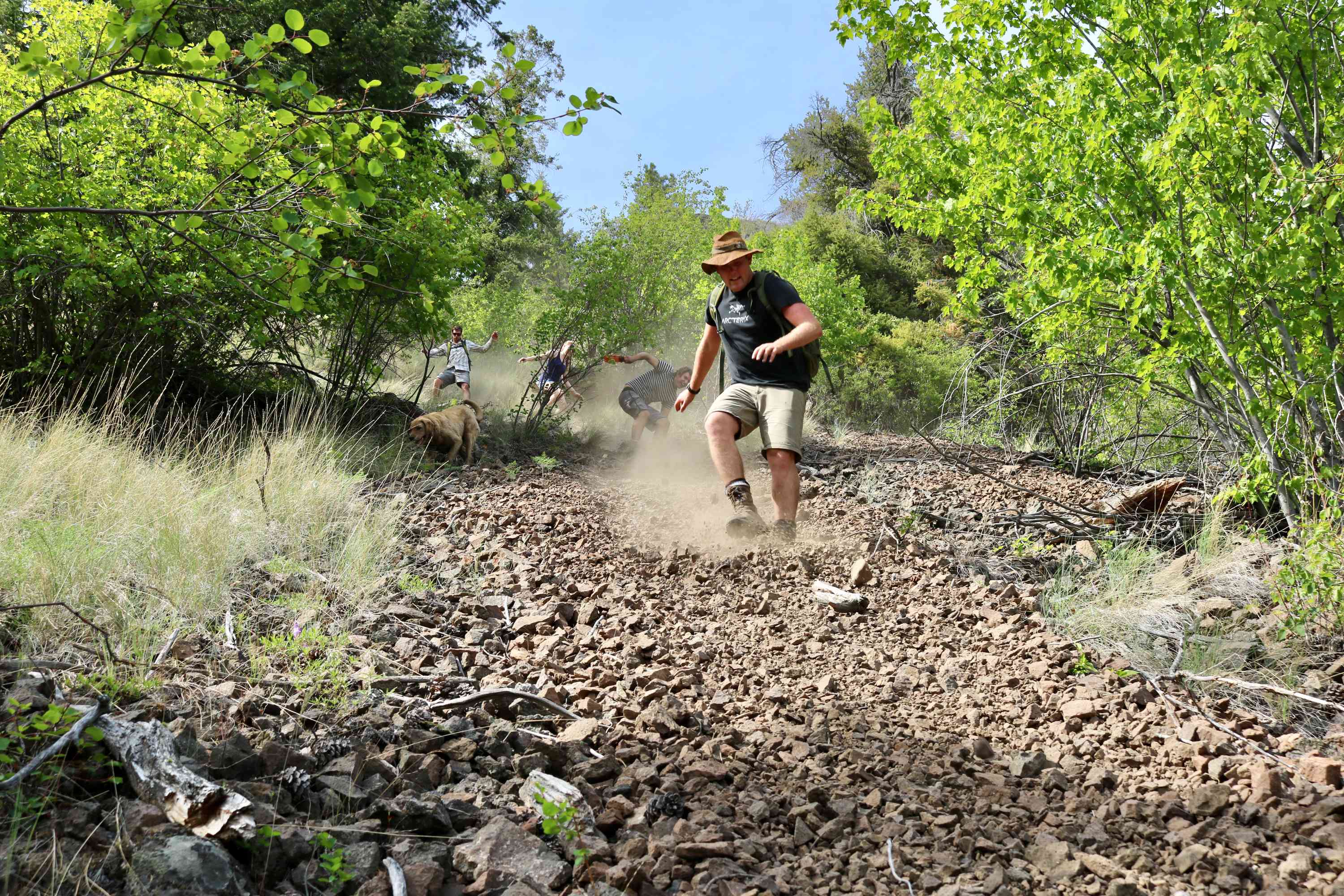Hiking 101
Hiking is a sport that everyone can safely enjoy. Most official inner-city trails in the Okanagan are well marked with signage and can be done with nothing more than a water bottle and pair sneakers. With the wide array of uniquely challenging trails that fall beyond this scope, always ensure you are well prepared by following these handy hints:
1) Water
While the human body uses two litres per day, trekking up variable terrain with changing weather can dramatically alter this minimum.
- Pre-hydrate by drinking one-litre of water prior to beginning the journey and allow the water to settle for up to twenty minutes.
- On hotter days, prepare to bring an additional half litre of water per hour of hiking as an absolute minimum.
- Never leave home without a minimum of two litres.
- Carrying a water bottle can be a nuisance, especially when scaling more technically challenging trails. A water bladder that can be thrown in a day pack will save the headache and is one of the most essential hiking investments one can make.
- Never trust water from streams or lakes. Even though the water may appear to be clear, or even moving, it can still harbour dangerous bacteria. This bacteria could cause serious illness which will require antibiotics, or leave you suffering from diarrhoea for days. Diarrhoea will rapidly deplete the body of water, making the problem worse!
- Well-research the water sources available on a trail and bring a package of chlorine tabs, a life straw, or water filter pump to purify the drinking supply if needed. Consider water sources on-trail as an emergency backup only and never as the primary source, as they may run try or be undrinkable.
- Always bring a stack of electrolyte tabs to pair with water on longer hikes. These tabs will help the body retain the water being consumed, instead of flushing it out.
2) Weather
Forgetting to check the forecast is one of the most common mistakes hikers make as they become comfortable with an area. Beyond checking for sun or rain, verify the elevation difference of the hike versus the trailhead. Expect to lose about 1°C for every 100 meters of elevation. The Environment Canada weather forecast also often includes the current "snow line." Allow the summit of a trail to be above freezing for a minimum of two weeks prior to Spring hiking. If in any doubt, throw a light-weight emergency rain poncho in the day pack and a spare pair of socks.
3) Attire & Basic Supplies
Protect yourself from the elements and arm yourself for worst case scenario. The list below are the most crucially basic components of any day pack, regardless of the hike duration or difficulty.
- bear spray (not horn) properly worn in an easily accessible area such as on belt or chest-strap
- bug spray
- cell phone for photos/emergency contact
- compass
- emergency rain poncho
- extra socks
- first aid kit
- garbage bag
- hat
- LED flashlight (preferably a hand-crank one)
- lighter
- paper copy of map in Zip Lock bag
- pen and paper
- pocket knife
- quick-dry clothing (weather-appropriate)
- spare laces
- sunglasses
- sunscreen
- toilet paper
- water tabs/filter
- whistle
4) Footwear
The single most important item will be footwear. Invest in shoes that use Gortex material. It is breathable yet water proof! Ankle support versus simple runners is crucial while dealing with any level of descent or a technical trail. And ALWAYS wear new footwear casually around in day to day life prior to hiking for two weeks before using for a prolonged period of time on trail. Forget? You may be risking the worst blisters of your life!
5) Backpack
Choosing the right pack can mean the difference between feeling like you're dragging boulders up a hill to barely noticing you have any supplies at all!
- A fully packed backpack should be no heavier than 1/3 of a person's body weight for a man, or 1/4 for a woman.
- Backpacks are also designed in different fits for men and women.
- That old high school backpack needs to get tossed! Hiking backpacks featuring a chest strap and waist support will dramatically help distribute the weight of the pack and prevent your skin from going raw due to friction.
- A proper hiking backpack should not be pressed directly against your back. Usually, packs will have a breathable mesh layer separating you from the pack.
- Always check to ensure the pack has a separate compartment to store a water bladder.
5) Location and Direction
Aside from leaving travel plans behind with a loved one, ensure that you have well-researched a topographical version of the trail map. Pay special attention to cliff faces, valleys, water sources, and anything else that may act as a landmark or hazard.
Ideally, print out a paper copy and do not rely on a digital GPS version alone. Seal it in a Zip Lock bag for water-proofing. While following trails by GPS can seem ideal, it will quickly drain the battery in a phone leaving you mapless! Bringing two extra charging cables, and a few spare backup batteries could save the day.
Always be aware at which end of the trail that the car was parked, and bring a compass incase bushwhacking becomes a reality.
6) Animals
Be aware of the type of fauna that flaunt their presence in the area and what to do if they are encountered. The Okanagan is littered with spiders, cougars, rattlesnakes and black bears, as the two most dangerous. It is very unlikely to encounter a grizzly bear in our area. Most animals want to fight about as much as you or I. Just as you will always be looking for the exit from a dangerous scenario, leave the animal an avenue of escape as well. If it feels trapped, it is more likely to fight back. There are many myths and misconceptions about handling wild animals, such as sucking out rattlesnake venom with your mouth or climbing a tree to avoid a bear. Research, research, research!


